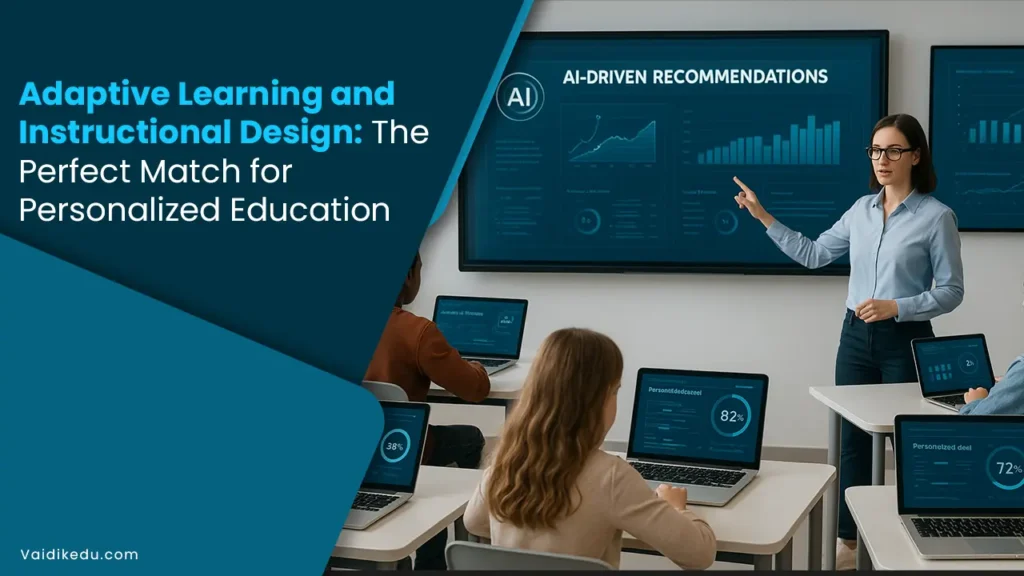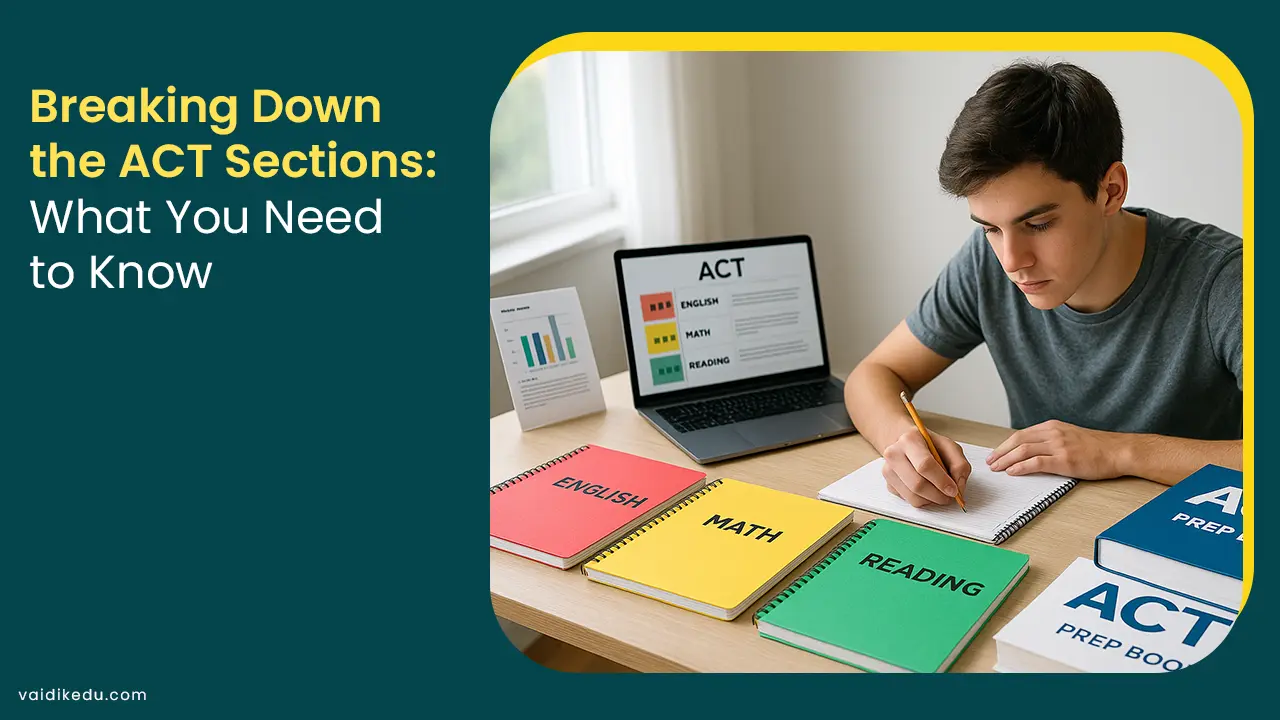The demand for personalized education is on the rise since learners are demanding more individualized experiences that are tailored according to their needs, preferences, and goals.
There are powerful approaches when combined into a transformative path to personalized education: adaptive learning, which comes about by leveraging technology, actually adjusts dynamically the learning experience according to performance; instructional design, which ensures educational content is structured effectively to produce the desired outcomes.
This blog looks into how adaptive learning integrated with instructional design is set to change the nature of education, what benefits this presents, and how teachers and designers can approach such applications of concepts to make a better difference in learning experiences.
Understanding Adaptive Learning
Adaptive Learning can be described as those technologies or educational systems using algorithms and data analytics that vary content delivery depending on learner need. It therefore is based upon:
- Personalized Paths: Adaptive systems identify the strengths and weaknesses of each learner and adjust content delivery to fill gaps and reinforce understanding.
- Dynamic Feedback: Learners receive feedback in real-time, so they can move ahead at their own pace.
- Data-Driven Insights: Adaptive systems analyze learner behavior to refine instructional strategies. For example, an adaptive learning system can change the difficulty level of the quizzes based on the student’s progress, providing much support in weak areas and progressing on topics that the learner has mastered.
Instructional Design
Instructional design is the systematic process of creating educational experiences that are effective, efficient, and engaging. It ensures that learning objectives are met by aligning content, assessments, and delivery methods.
Key principles of instructional design include:
- Learner-Centered Design: Learner needs and preferences overall.
- Aligning to learning objectives: activities and content support the clearly defined learning objectives
- Assessment in Instructional design: Assessing the progress for learning and using it as a guide.
ADDIE is one type of instructional design framework that defines a structured method of preparation for courses. It focuses on consistency, quality, and so on while creating courses.
The combination of adaptive learning and instructional design helps create a synergy that enhances the personalization process and effectiveness in education.
The Following Are the Ways They Can Complement Each Other:
1. Personalized content delivery
Instructional design sets the foundation for content creation, where it is structured into modules based on learning objectives. Adaptive learning systems then deliver this content dynamically, customizing the experience for each learner. For example:
A math course designed with instructional design principles can include multiple difficulty levels, which the adaptive system adjusts based on learner performance.
2. Real-Time Adjustments to Learning Paths
Instructional designers design pathways that can branch based on learner needs. Adaptive systems use data to guide learners through these pathways, ensuring they receive content that matches their pace and understanding.
3. Increased Engagement
Instructional design ensures the content is interesting and engaging. Adaptive learning systems keep students interested by providing a challenging degree of content, immediate feedback, and gamification elements.
4. Resource Optimization
Adaptive systems provide learner data analysis that focuses on the greatest struggles of the students. Then, instructional designers can improve or provide more relevant content or resources, optimizing learning.
Benefits of the Combination of Adaptive Learning And Instructional Design
1. Better Learning Outcome
Personalized pathways ensure learners receive support where they need it most, leading to better comprehension and retention.
2. Increased Learner Motivation
Engaging, context-specific content ensures learners are maintained in their flow, reduces the dropout rate, and enhances learner satisfaction.
3. Scalability
Instructional design with adaptive systems ensures scalability, enabling high volumes of users without loss of quality.
4. Continuous Improvement
The insight into the learner and data analytics through adaptive systems is important to refine the designer, thus, relevant and effective over time.
5. Accessibility
Adaptive learning offers content that is accessible to all learners regardless of the differences they have while the frameworks in instructional design embed inclusivity within the structure of the course.
Best Practices in Implementing Adaptive Learning with Instructional Design
1. Learner Needs Analysis
You need to understand your target audience in detail, including their prior knowledge, learning preferences, and challenges. This information forms the basis of adaptive learning strategies as well as instructional design decisions.
2. Modular Design
Content should be developed in small, self-contained modules. Modular design enables adaptive systems to reorganize content dynamically, and it provides the learner with explicit milestones.
3. Focus on Feedback Mechanisms
Implement the opportunity to obtain real-time feedback in your class. Examples include the provision of quizzes that change the difficulty level attained and immediate explanations of correct and incorrect answers to any question asked.
4. Use Technology
Choose adaptive learning platforms that fit within your objectives for instructional design. Examples include platforms like Knewton, Smart Sparrow, and DreamBox Learning, among others.
5. Pilot And Iterate
Test your pilot with a small set of learners, gathering experience feedback. Refine not only the instructional design but also the adaptive algorithms.
Challenges And Solutions
1. Complexity in Integration
Adaptive learning design and instructional design require both perspectives to team up.
Solution: Provide integrative teams of instructional designers, subject matter experts, and technical teams to take on the integration process together.
2. Data Privacy Concerns
Adaptive learning systems work on collecting data and, therefore, become a privacy concern.
Solution: Offer robust data security measures and ensure compliance with regulations such as GDPR.
3. Resistance to Change
Teachers and learners tend to resist transitioning to adaptive systems.
Solution: Allow for training sessions and even emphasize the benefits of this personalized experience.
Future of Personalized Education
Adaptive learning and instructional design are changing the face of education. AI will help achieve more complex algorithms that will make adaptive systems more intelligent, with a better understanding of the needs of the learner.
Virtual Reality and Augmented Reality will supplement adaptive learning and provide more immersive and interactive environments for learning.
Lifelong learning: Adaptive systems will promote life-long learning thereby reskilling and up-skilling workers at all careers.
Further Discourse: Addressing the Lacking Through Adaptive Learning and Instructional Design.
Adaptive learning, coupled with instructional design, is a learning ecosystem that is adaptive to the individual’s needs yet is structured enough to follow educational structures.
Technology is the bedrock for adaptive learning; data analytics and machine learning provide real-time personalization in the delivery of content. In such a setting, the marriage between this process and the systemic approach of instructional design produces an individualized, interesting, and impactful learning experience.
For example, content developed by an instructional designer is modularly structured with clear learning objectives. Adaptive systems then study the learner’s progress and order the modules of the content dynamically.
All this is based on the speed of the learner as well as on the learner’s level of understanding. A learner who can’t get along well with advanced topics is passed through extra fundamental content.
For the advanced learner, the redundant content is bypassed so that he or she does not lose steam and become stagnant and disengaged.
More importantly, the design of instruction features access, for example, through alternative text, captioning, and mobile optimization.
All of these are amplified further by adaptive learning, for example, in multilingual support, adaptive assessments, and instant feedback, which identifies the gaps in knowledge.
All these approaches contribute to a student-centered environment rich in understanding, retention, and engagement. Combined with design for instruction, this adaptive learning has the potential of revolutionizing how customized learning looks when there is change sweep in the learner’s environment by fitting their need in facing each day’s given challenges in life.
Conclusion
A combination of adaptive learning and instructional design is a perfect pairing in developing personalized learning experiences. Bringing data-driven insights into structured course design will help the educator not only cater to the unique needs of each learner but also improve engagement, retention, and outcomes.
Challenges are there, but careful planning, collaboration, and the right technology can make them surmountable and pave the way for a future of personalized education.
Frequently Asked Questions
Adaptive learning refers to systems or technologies that modify the learning experience in real-time according to individual learner behavior, performance, and needs.
Instructional design makes sure that educational content is well-structured, engaging, and aligned with learning objectives, providing the foundation for personalization.
Key technologies embrace AI algorithms and machine learning for data analytics plus some specialized platforms such as the Smart Sparrow and Knewton.
Challenges are integration issues, concerns around data privacy as well as teachers and learners’ resistance to change. Training, partnership, and appropriate data protection standards will solve some of these obstacles.









